Arizona, Suppliers Unite Against Uber Self-driving Program
Ever since last week’s fatal accident, in which an autonomous test vehicle from Uber struck a pedestrian in Tempe, Arizona, it seems like the whole world has united against the company. While the condemnation is not undeserved, there appears to be an emphasis on casting the blame in a singular direction to ensure nobody else gets caught up in the net of outrage. But it’s important to remember that, while Uber has routinely displayed a lack of interest in pursuing safety as a priority, all autonomous tech firms are being held to the same low standards imposed by both local and federal governments.
Last week, lidar supplier Velodyne said Uber’s failure was most likely on the software end as it defended the effectiveness of its hardware. Since then, Aptiv — the supplier for the Volvo XC90’s radar and camera — claimed Uber disabled the SUV’s standard crash avoidance systems to implement its own. This was followed up by Arizona Governor Doug Ducey issuing a suspension on all autonomous testing from Uber on Monday — one week after the incident and Uber’s self-imposed suspension.
Is YOUR Ferrari 488 Affected by the Latest Recall?
Ferrari is recalling certain 488s produced during the 2016 model year, after the manufacturer uncovered a software glitch that may occur if the vehicle’s brake discs are in need of replacement. The issue affects 39 488 GTB coupes and one lone 488 Spider produced between June and November of 2015.
According to a filing with the National Highway Traffic Safety Administration, a “software error may cause the software algorithm which calculates the percentage value of wear of the carbon-ceramic brake discs of the vehicle to malfunction.” This might result in the vehicle’s brake disks wearing down past the point of needing replacement without the driver being notified via the applicable warning messages.
While it would be unfair to assume any Ferrari owner doesn’t rigorously maintain their vehicle themselves, spending every other Sunday in the garage with a rag, a wrench, and a handheld laser micrometer, the lack of a brake disk warning light could theoretically cause some people to neglect replacement — creating an increased likelihood of an accident. And we know you would hate to be the kind of Ferrari owner that smacks into the back of an SUV in the Home Depot parking lot because you forgot to swap in fresh new set of $25,000 brake discs.
LIDAR Supplier Defends Hardware, Blames Uber for Fatal Crash [Updated]
Parts supplier Velodyne Lidar Inc. has come out against Uber Technologies following the release of video footage showing one if its autonomous test vehicles fatally striking an Arizona woman this week. Marta Thoma Hall, president of Velodyne, said she was confused as to why the autonomous SUV failed to see 49-year-old Elaine Herzberg crossing the street.
Velodyne, which supplies autonomous sensing equipment to many of the world’s automotive and tech firms (including Uber), is currently cooperating with federal investigators to determine what happened in Tempe, Arizona, on Sunday evening.
Light It Up: Canucks to Mandate Taillight Illumination
It’s a problem — one I’m sure you’ve witnessed. A hapless driver, plodding along a darkened highway with no taillights illuminated, mistakenly thinking their lights are on thanks to a bright dashboard and flaccid daytime running lights.
High on poutine and maple syrup, Transport Canada is having no more of it, announcing a new mandate requiring all new cars sold in the Great White North to have extra illumination starting in 2021.
The initiative also proves that someone within the Canadian government has a sense of humour, as Transport Canada says they’re going “ghostbusting to target phantom vehicles.” Break out the ECTO-1!
Video of the Autonomous Uber Crash Raises Scary Questions, Important Lessons
On Wednesday evening, the Tempe Police Department released a video documenting the final moments before an Uber-owned autonomous test vehicle fatally struck a woman earlier this week. The public response has been varied. Many people agree with Tempe Police Chief Sylvia Moir that the accident was unavoidable, while others accusing Uber of vehicular homicide. The media take has been somewhat more nuanced.
One thing is very clear, however — the average person still does not understand how this technology works in the slightest. While the darkened video (provided below) does seem to support claims that the victim appeared suddenly, other claims — that it is enough to exonerate Uber — are mistaken. The victim, Elaine Herzberg, does indeed cross directly into the path of the oncoming Volvo XC90 and is visible for a fleeting moment before the strike, but the vehicle’s lidar system should have seen her well before that. Any claims to the contrary are irresponsible.
Spot the Changes: 2019 Ford Fusion Gains Newish Face, Plug-in Version Now Takes the Long(er) Way Home
Squint harder. Yes, there are changes afoot in the 2019 Ford Fusion’s visage, though you’ll be forgiven if you can’t spot them from across the Lowe’s parking lot.
The automaker released images and information for the lightly refreshed model on Tuesday, ahead of its official debut at the upcoming New York Auto Show. Besides styling tweaks designed to keep things young and pert, all 2019 Fusion trim levels boast one of Ford’s new Co-Pilot 360 suite of driver assist features — even the lowly S model. For green car aficionados, the Blue Oval added an extra helping of electrons to the plug-in hybrid Energi model. Expect to burn ever so slightly fewer gallons of gas in a given year.
For now, Ford isn’t saying what others have: that this might be the last Fusion we ever see.
Unpacking the Autonomous Uber Fatality as Details Emerge [Updated]
Details are trickling in about the fatal incident in Tempe, Arizona, where an autonomous Uber collided with a pedestrian earlier this week. While a true assessment of the situation is ongoing, the city’s police department seems ready to absolve the company of any wrongdoing.
“The driver said it was like a flash, the person walked out in front of them,” explained Tempe police chief Sylvia Moir. “His first alert to the collision was the sound of the collision.”
This claim leaves us with more questions than answers. Research suggests autonomous driving aids lull people into complacency, dulling the senses and slowing reaction times. But most self-driving hardware, including Uber’s, uses lidar that can functionally see in pitch black conditions. Even if the driver could not see the woman crossing the street (there were streetlights), the vehicle should have picked her out clear as day.
GM Claims It Will Start Manufacturing Autonomous Cars Next Year
General Motors has announced it will begin manufacturing autonomous vehicles by 2019. Since purchasing Cruise Automation in 2016, GM has invested heavily into self-driving cars. However, its Chevrolet Bolt-based Cruise AV has only served as a testbed for the technology. That will change next year when the Orion Township assembly plant in Michigan starts building examples for commercial use.
If so, that would make General Motors the first company to sell an autonomous vehicle. However, it’s not entirely clear if that’s the ultimate goal. Thus far, GM has only said the autos will enter into a “ride-sharing environment” where the vehicles can be managed in a fleet — perhaps something akin to Uber.
Obviously, the analogy is as accurate as it is unfortunate. Uber recently suspended autonomous testing after one of its vehicles fatally struck a pedestrian earlier this week. While GM’s product planning can hardly be faulted for the goings-on at another company, the collision could see the general public wonder if production Cruise AVs are ready to take over the road.
Self-Driving Uber Vehicle Fatally Strikes Pedestrian, Company Halts Autonomous Testing
In the evening hours of March 18th, a pedestrian was fatally struck by a self-driving vehicle in Tempe, Arizona. While we all knew this was an inevitability, many expected the first casualty of progress to be later in the autonomous development timeline. The vehicle in question was owned by Uber Technologies and the company has admitted it was operating autonomously at the time of the incident.
The company has since halted all testing in the Pittsburgh, San Francisco, Toronto, and greater Phoenix areas.
If you’re wondering what happened, so is Uber. The U.S. National Transportation Safety Board (NTSB) has opened an investigation into the accident and is sending a team to Tempe. Uber says it is cooperating with authorities.
NHTSA Investigates Why Kia, Hyundai Airbags Didn't Deploy in Fatal Crashes
The National Highway Traffic Safety Administration has opened a probe into two older-model Kia and Hyundai vehicles in the wake of six head-on collisions, hoping to discover why the vehicles’ airbags failed to deploy.
Included in the investigation is the 2011 Hyundai Sonata and Kia Fortes from the 2012 and 2013 model years. The collisions reported by the safety agency resulted in four deaths and six injuries.
Salty States Get a Ram 1500 Recall of Their Very Own
Mankind’s greatest foe — road salt — can never be fully vanquished, and the latest evidence of its malevolence just cropped up in 20 northern states. Salt, though essential to human life, turns water brackish and wreaks havoc on vehicles — just ask the owners of previous-decade Toyota Tacomas, Nissan Frontiers, and Mazda 3s.
We can now add the 2009-2012 Ram 1500 pickup to the list of vehicles with salt-sullied undercarriages, though this issue, for which Fiat Chrysler is recalling 270,254 vehicles in the U.S., doesn’t result in the vehicle breaking in half (or, in the case of the Mazdas, disappearing into brown dust).
The Wheels Are Coming Off At Ford - Steering Wheels, That Is
Ford Motor Company has announced a recall of 1,378,637 vehicles for a very concerning problem: steering wheels that may come loose and detach from the steering column while the car is underway.
It’s a problem first investigated by the National Highway Traffic Safety Administration last year, but Wednesday’s recall spreads a wider net. Affected vehicles include Ford Fusion and Lincoln MKZ sedans built in the U.S. and Mexico over five model years. According to Ford, the problem stems from a key bolt that just can’t stay married to the threads.
Vehicle Recalls Are Down in the U.S., but Not Everyone's Celebrating
Automotive recalls in the United States dropped to the lowest level since 2013 last year. In 2017, domestic recalls fell to 30.7 million — far less than 2016’s record high of 53 million. That’s good news, right?
Probably. The National Highway Traffic Safety Administration demands manufacturers be Johnny-on-the-spot with fixes ever since General Motors’ ignition switch scandal back in 2014. That means it’s either gotten incredibly lax in its duties under Donald Trump’s watch or automakers simply had a better year. While the NHTSA suffered important staff shortages for literally all of 2017 and has seen the current administration pressing for less regulation overall, the recall decline could also be attributed to the Takata airbag inflator situation finally winding down.
However, it’s no secret that the Obama administration wanted to see the safety administration exercising its regulatory muscle. In 2016, automakers issued a record 924 recall campaigns. That number fell to 813 last year. The NHTSA has also neglected to impose new vehicle safety fines since Trump took office and been operating without permanent leadership for more than 13 months.
Safety Group to Senate: Clue in to the 'Baseless and Exaggerated Predictions' Swirling Around Autonomous Vehicles
Last year, the National Highway Traffic Safety Administration embraced autonomous technology by redefining how it categorized cars. Spurred by automakers and tech companies, the government has opened its eyes to this new technology and seen it as a way to potentially save lives by reducing the number of roadway accidents caused by human error.
Congress has been confronted with numerous pieces of legislation on the matter, too — prospective laws that would allow automakers to put hundreds of thousands of autonomous vehicles on the street, without the need to adhere to existing safety regulations. Many have called the move necessary if the United States hopes to be the first country to produce a truly self-driving car and start saving some lives.
It sounds almost too good to be true, and some claim it actually is. A group of public interest organizations is attempting to sound the bullshit alarm, claiming automakers are misleading government officials in the hopes of developing and profiting from unproven technology.
After a Year's Delay, U.S. Decides All Electric Vehicles Must Make Noise by 2020
First ordered by Congress in 2010 and delayed endlessly ever since, the U.S. Department of Transportation has finalized a date for the end of “noiseless” electric vehicles and hybrids: September 2020.
That’s a year after the previous deadline, announced in the final days of the Obama administration in November 2016. The National Highway Traffic Safety Administration subsequently froze the date in order to hear arguments from automakers. With that process now wrapped up, the new (and unchanged) rules mean any four-wheeled vehicle with a GVWR of less than 10,000 pounds must emit a pedestrian-warning noise at speeds below 18.6 miles per hour.
Enjoy the “silence” while you can.
FCA Design Head Uses Jeep Wrangler to Intervene in Fiery Accident
Last weekend, a drunk driver in a Ford Edge crossed into oncoming traffic in Addison Township, Michigan, and collided with a 2013 Ford Fiesta in the early hours of Sunday morning. At the same time Ralph Gilles, Fiat Chrysler’s Global Head of Design, was returning from an evening out with his wife and happened across the scene as the engine compartment of the Edge was beginning to catch fire.
With the occupants of the Fiesta trapped inside, Gilles decided to use his Jeep Wrangler push a burning SUV away from a wrecked hatchback — hoping to save them from a fiery death by keeping the flames from spreading to their vehicle. He explained that he had arrived just moments after the crash and had noticed the Edge driver had already exited the vehicle. Unfortunately, one of the two people in the Fiesta later passed away due to injuries sustained during the accident. But he may have saved the other by pushing the flaming SUV to the side of the road.
Cycling Pileup Shows the Unexpected Dangers of Vehicle Safety Aids
Thanks to a pact among the world’s largest automakers, automated emergency braking will soon be standard kit on nearly every new vehicle, paving the way for a future of collision-free bliss. That’s the plan, anyway. While undoubtedly a valuable addition to the automotive landscape, self-thinking vehicle safety systems sometimes reveal their dark side.
That’s what happened Wednesday during the Abu Dhabi Tour — a big-deal cycling race in a locale where hydration no doubt takes on new importance. Fluids weren’t top of mind for five of the cyclists, however, as their race was cut short by a Mercedes-Benz with a mind of its own.
Trusty Column Shifter Can't Be Trusted in These Recalled Rams
We have a particular fondness for the unintrusive, non-gimmicky column shifter here at TTAC. They’re satisfying to shift, pleasingly retro, and free up space between the front seats for any number of things, including a seat. Column shifters also keep your eyes pointed straight ahead, instead of having them wandering around the console or bottom of the center stack, searching for that newfangled dial shifter or push-button array.
Sadly, the column shifters in more than 228,000 Ram trucks are an invitation to danger. Fiat Chrysler Automobiles has announced a recall of so-equipped models in the hopes of preventing rollaway accidents.
Ranger Danger: Ford Issues 'Stop Driving' Order for Another 33,000 Trucks
After alerting drivers of nearly 3,000 2006 Ranger pickups last month, Ford Motor Company wants the owners of another 33,428 trucks to stop driving their vehicle, get out, and walk away.
The vehicles involved in this latest “stop driving” order are, like the other crop, all presently under recall for a potentially deadly airbag defect, though recent tests show they could be especially dangerous in the event of an airbag deployment. Ford singled out the earlier group of vehicles after discovering a connection between two airbag-related deaths in the United States. The unstable Takata airbag inflators found in both vehicles, which detonated and sprayed both crash victims with metal shards, were assembled on the same day.
These 33,428 Rangers could be equally dangerous, the company says.
Drowsy Driving Might Be a Bigger Problem Than Previously Thought
Back in 2014, an American Automobile Association study estimated that tired motorists were responsible for around 328,000 accidents annually — 6,400 of which were fatal. However, unlike drunk driving, there’s no sound metric for assessing the true scope of the problem. Getting tired is something that just sort of happens. People don’t stay out all night not sleeping because it’s fun, the police can’t test for it, and almost nobody is going to say they were dozing off behind the wheel in an accident report — either because they are too embarrassed or stopped feeling tired at the moment of their brush with death.
That makes the issue a bit of a phantom menace. We all know it’s a problem, but the frequency remains debatable. Fortunately, a new study released by AAA this week helps clear things up. Researchers affixed dashboard cameras to 3,593 vehicles in order to monitor the drivers’ faces, then used a PERCLOS-based fatigue monitoring strategy to come to the conclusion that drowsiness is a contributing factor in 10.6 to 10.8 percent of all accidents resulting in significant property damage, airbag deployment, or injury.
Toyota Recalling Late-model Prius and Specific Lexus SUVs
Toyota announced a recall of roughly 49,000 vehicles in the United States on Wednesday. Affected models include the 2016 Toyota Prius, the 2016 Lexus RX, and the 2015-2016 Lexus NX crossover. The safety issue involves the airbag systems that could fail due to an electrical problem.
Unlike the scary Takata recalls, the biggest danger here is the non-deployment of the front or side-curtain inflators. Toyota claims an open circuit could develop within the system’s sensor. If this were to occur, the airbag warning light should illuminate to indicate a failure.
Not Just Monkeys: German Automakers Also Sponsored Diesel Emissions Experiments on Humans
Over the weekend, we reported that German automakers funded research where monkeys were exposed to diesel exhaust fumes from an emissions-cheating VW Beetle. Volkswagen Group, Daimler and BMW all condemned the study — claiming to be appalled by the logistics employed for research they were funding.
Apparently, the situation is a little darker than we first thought. In addition to gassing 10 monkeys, the group hired by automakers to prove the worth of diesel was also testing on human beings. The European Research Group on Environment and Health in the Transport Sector (EUGT) had 25 people inhaling a gaseous byproduct of diesel combustion at a clinic used by the University of Aachen in 2016.
Idiots Need to Understand That Self-driving Cars Aren't Here Yet
With automakers, the Department of Transportation, NHTSA, and Congress all attempting to get self-driving vehicles onto the road as quickly as possible, the autonomous revolution finds itself in a sticky situation. Some motorists are confusing their semi-autonomous technology with an impenetrable safety net. This has resulted in avoidable accidents as drivers assume their high-tech cars can cope with whatever’s thrown at them, and it’s probably going to get worse as more idiots buy them.
We’ve already covered how semi-autonomous features make everyone less-effective behind the wheel and the fatal Tesla Autopilot crash was a story we kept up with for over a year. Investigators ruled that accident was the perfect storm of mishaps, however, there remains a common thread between the two pieces. The driver may have been spared were he not so eager to put his faith into the vehicle’s semi-autonomous system.
On Monday, a Tesla Model S collided with stopped firetruck that was responding to an accident on a freeway in Culver City, California. As you already guessed, the driver told the firefighters that the vehicle was operating in Autopilot mode. While nobody was injured in the crash, it’s another stroke in the ugly portrait of people placing blind trust in a technology they don’t understand. And, boy oh boy, are we just getting started on illustrating this problem.
2018 Pickup Crash Ratings Show What the New Crop of Trucks Needs to Get Right
Truly, this is a momentous year for trucks. Not one, not two, but three completely revamped or wholly new domestic pickups greeted us in Detroit last week, ready to capitalize on America’s unyielding hunger for vehicles that can haul, tow, ford, climb, traverse, and commute daily with a single occupant.
While we haven’t yet had an opportunity to put the 2019 Ram 1500, Chevrolet Silverado 1500, or Ford Ranger through their paces, we’d hope to find an increase in refinement and capability in returning models. Over at the Insurance Institute for Highway Safety, however, there’s a different testing regimen planned. Let’s just say it’s a hard-hitting one.
And if Ram or Chevy wants to get into the IIHS’ good books, those trucks had best perform better than their so-so predecessors.
Safety Group Leans on Ford to Recall 1.3 Million Explorers
After receiving negative attention from various policing agencies over a potential carbon monoxide leak in Explorer-based Interceptor Utility vehicles, Ford is being urged by the Center for Auto Safety to recall over a million vehicles. While the automaker hasn’t yet done so, it hasn’t been sitting on its hands, either. The automaker issued technical service bulletins to service centers, dispatched its own investigative teams to examine police fleets, and said it would work with the National Highway Traffic Safety Administration as the agency conducted a probe of its own.
Ultimately, Ford said the vehicles were safe — attributing the claimed monoxide leaks to aftermarket modifications common on police vehicles. However, it also agreed to examine and repair any Explorer (for civilian or official use) in the hopes of reassuring worried owners. Meanwhile, customer complaints ballooned after news of the story broke.
In July of 2016, the NHTSA had fewer than 200 Explorer-related grievances on file. The Center for Auto Safety claims that number has now grown to 1,400.
Ford Seeking Group of Ranger Owners With Extremely Dangerous Trucks
Some 2,900 Ford Ranger pickups from the 2006 model year pose such a high risk to their owners, Ford Motor Company wants those people to stop driving them immediately. So great is the concern, Ford is recalling vehicles already named in an earlier recall, just so it can identify who the owners are.
Of the 21 deaths and hundreds of injuries reported from exploding Takata airbags, only two fatalities occurred in vehicles not built by Honda. A Ranger airbag explosion in 2015 killed a female driver. Now, the automaker claims it has discovered the July 2017 death of a West Virginia driver was also the result of a Takata inflator — and that both victims’ inflators were manufactured on the same day.
400 Deaths Per Day: Is India Seeking Automotive Safety in the Wrong Places?
Every year, nearly 40,000 people lose their lives on American roadways. Tragic as that may be, it’s small potatoes when you consider India hovers around 150,000 annual fatalities. While you could attribute the difference to the 1.32 billion people living in the country, the truth is that car ownership in India is far less common than in the United States.
Here, there are about 255 million functioning vehicles, leaving the majority of the population with access to some form of four-wheeled transportation. However, in India, the number is closer to 55.7 million — which only gives 42 people out of every 1,000 access to an automobile.
Confronted with a situation that can only be described as catastrophic, Prime Minister Narendra Modi is seeking to impose harsher penalties for traffic violations and requiring automakers to add safety features to cars sold within the region. While that’s a fine start, it doesn’t address the core issue: a nationwide lack of discipline behind the wheel.
Put 'er in Low: Ford's Crash-diving Transmission Earns Another Investigation
In 2016, Ford Motor Company’s stable of rear-drive vehicles came under scrutiny for six-speed transmissions that couldn’t decide whether to sprint or crawl. Owners reported that their 2011-2012 F-150s, Expeditions, Mustangs, and Lincoln Navigators would, suddenly and without warning, downshifting from upper ratios to first gear, ultimately forcing the automaker to recall some 153,000 of the vehicles in the United States.
It now looks like it didn’t recall enough of them. Dangerous downshifts continue, and not just in vehicles covered by the recall. Another concern is that the problem is reappearing in supposedly “fixed” vehicles.
Maserati Recalling Brand New Sedans Over Fire Risk
Maserati of North America is recalling over 1,000 of its newest luxury sedans to repair fuel lines that pose an engine fire risk. It’s not exactly what you’d want to hear when discussing your fresh, six-figure status symbol, but the automaker appears to be addressing the problem right out of the gate. According to the manufacturer, the vehicles haven’t even been delivered to the customers yet.
The affected vehicles include Maserati’s 2018 Ghibli and Quattroporte sedans. Both models suffer from a potentially weepy fuel line in the engine compartment that could leak gasoline exactly where you don’t want it. As customers have yet to take delivery, the units will have to be repaired prior to being picked up.
Alfa Romeo Giulia and Stelvio Recalled for Brake Snafu
Many years of competing in demolition derbies taught me many things, such as the value of not looking over my shoulder while reversing into someone at a high rate of speed and the importance of a good neck brace. I also learned that while one can substitute other liquids for transmission fluid, braking systems don’t play well with any pollutant that’s not designed to be in there.
Alfa Romeo has also discovered this fact, and is now recalling a total of 307 Giulia sedans and Stelvio crossovers from the 2018 model year for potentially contaminated brake fluid.
The IIHS is Hoping For a Bright Future When It Comes to Headlights
Even though headlights have evolved from uniform circles illuminating the roadway in largely the same way to diverse units that look and function very differently, their overall performance has improved immensely. Nobody is going to jump from a 1955 DeSoto to a 2018 Dodge and think “Wow, these headlamps are just terrible.”
However, the International Institute for Highway Safety has been on a two-year mission to make modern headlights look bad and there are two possible explanations as to why. Either the IIHS genuinely believes the current offerings from manufacturers are unsafe, or it’s trying to promote competition within the industry to produce a better bulb. The truth, as usual, is likely somewhere in the middle.
Canada Slow to Realize Something Might Be Wrong With 2008 Smart Cars
Maybe it’s the Hoth-like climate and the urge to do anything in one’s power to warm it up, but Canada has so far taken a laid-back approach to the fires plaguing older Smart Fortwo models. A big part of the problem is that no one’s telling the country’s transportation regulator about them.
The models bursting into flames in the Great White North are of the same vintage as those which sparked an investigation by the United States’ National Highway Traffic Safety Administration. However, Transport Canada has yet to open a defect investigation of its own.
Yet Another Transmission Shifter Problem at Fiat Chrysler; 1.48 Million Rams Recalled
For a while, it seemed Fiat Chrysler Automobiles’ fancy (and confusing) console-mounted monostable shifters and newer rotary-dial shifters were out to give every FCA executive a headache. Unfortunately for them, there’s new safety issue causing vehicle rollaways, and this time it’s from a seemingly tried-and-true bit of automotive gear.
The traditional column shifter.
FCA is now recalling 1.48 million Ram pickups spanning nine model years to prevent further injuries and accidents.
Who's Really to Blame for Robot-Human Crashes? Are We Really Such Awful Drivers?
(In keeping with our promise to share thought-provoking fodder with our readers, we sometimes run articles published by TTAC’s sister sites. This look at recent crashes involving self-driving Chevrolet Bolts, penned by GM Inside News head honcho Michael Accardi, touches on a number of themes we’ve explored in these pages. Are humans really to blame for all of the accidents involving “perfectly safe” autonomous vehicles, or is the real picture not as crystal clear? Read on.)
The autonomous Chevrolet Bolts GM’s self-driving startup has running around San Francisco have been involved in 22 accidents during 2017 – none of which were the software’s fault (legally, that is).
Cruise Automation has been using a fleet of self-driving Chevrolet Bolts to log autonomous miles in an urban environment since GM purchased the company for more than $1 billion in 2016. When you’re trying to disrupt personal transportation as we know it and develop a new technology standard, there are bound to be a few incidents.
But this hybrid model of humans and algorithms sharing the road is more complex than simply apportioning blame based on the law, isn’t it? None of the 22 incidents involving GM’s Cruise fleet were serious, but a majority of them were caused by a fundamental difference in the way autonomous and human drivers react.
'Tis the Season: Holiday-related Driving Deaths By State
In addition to being needlessly stressful, obligatory holiday travel poses an elevated risk of roadway mishaps. Inclement weather, congested highways, and overtaxed drivers traversing long distances is an exceptionally bad formula. We don’t have to spell it out further; you’ve likely seen seasonal roadside tragedies firsthand and been thankful it wasn’t you.
However, depending on where you’re making your holiday pilgrimage this year, the associated risks could be much higher or lower than someone traveling a few states over. Not all regions are created equal, and some parts of the United States appear to be particularly susceptible to road fatalities during annual festivities.
GM Patents Exterior Airbag; Pop-Up Headlights Set for Triumphant Return?
Bugatti Recalls Involve Something Called a 'Flying Doctor'
We know the odds of your owning a $3 million Bugatti Chiron are pretty slim, so recall information from the brand doesn’t pertain directly to you. However, it’s sometimes interesting to examine how the other half lives. Have you ever wondered what several million dollars will get you when you spend it on a car that may have left the factory less than perfect?
According to the manufacturer, you are graced by the presence of one of Bugatti’s “Flying Doctors.” These mobile mechanics will begin contacting 47 Chiron owners to schedule dates where they can visit and examine the vehicles for faulty welds in the front seat recliner brackets. The bad welds are only expected to affect one-percent of the total, which works out to a perplexing half a car by our math. But, when you pay a few million for a car, you expect dapper concierge technicians at the ready.
The IIHS' Updated Criteria Absolutely Devastated Its Top Safety Pick List
While the Insurance Institute for Highway Safety has steadily upgraded its standards over the last two years, the effort hasn’t been without casualties. In a new effort to improve headlight safety and impact protection, the organization has changed its testing criteria for 2018 to include both illumination and passenger-side frontal impacts.
Unfortunately, including these aspects in its final verdict of how safe a vehicle is has removed numerous models from consideration for 2018’s Top Safety Pick+ awards. Last year, 38 vehicles qualified for the safety plus appointment. This year, however, the grand total only came to 15 models — most wearing badges from Hyundai Motor Group and Subaru.
The IIHS makes no apologies for keeping so many cars from receiving top honors. Instead, it claims it was time to heap higher expectations on automakers for items like visibility and passenger safety.
Automakers Need to Improve Voice Command Systems ASAP
Amazon’s Echo has already invaded homes across North America, but it’s now beginning to creep into vehicle infotainment systems. My parents have one and both are quite fond of its ability to answer basic queries through intuitive voice commands. Though my mother refers to the system as my father’s “new wife,” it prefers to be addressed as Alexa when being issued instructions. If you need another point of reference, it’s reminiscent of Apple’s Siri, the computer from Star Trek, and any other automated technology using a female voice as the primary interface.
However, as handy as these systems are, they sometimes make mistakes. Alexa is great at giving me the weather but, when you give her more complex requests, she’ll sometimes get confused. That’s not a big problem when you are able to whip out your phone and go online, but it can be real annoying when driving. Early voice command interfaces in automobiles were infuriating — it was often easier to give up and input whatever information you were trying to shout at Ford Sync, BMW iDrive, or whatever decade-old system you happened to be using.
Thankfully, voice recognition is far better now than it was in 2008. But with so many concerns about automotive safety cropping up, it’s a little surprising that nobody has yet perfected an interface that effectively allows motorists to keep their hands where they belong — on the wheel.
New Bill Would Outlaw Driving Under the Influence of Dog
There are few things that offer the same kind of trivial gratification as a photograph of a dog behind the wheel of an automobile. Assaulting several different pleasure centers of the brain simultaneously, the image of a dog driving a car is objectively perfect. Even thinking about it just now probably caused a positive reaction in your mind.
It’s as endearing as it is hilarious. Subaru developed an entire ad campaign around the concept and other groups have used similar tactics — resulting in viral videos and critical acclaim. However, as great as a dog pretending to drive a car is, there are few things less infuriating than when someone allows their dog to sit on their lap whilst operating a motor vehicle.
Apparently, I’m not alone in this opinion, as a bill has been introduced to crack down on this highly specific form of distracted driving.
How Dangerous Is America's Obsession With High Speed Car Chases?
Have you ever watched those police chase compilation videos and noticed that the crème de la crème always seem to take place within the United States? That’s not a coincidence. American roadways are custom built for high-speed shenanigans and culture has fetishized the concept of “the getaway.” Toss in local law enforcement agencies with vehicles fast and bulky enough to mix it up with speeding perps and you’ve got the perfect recipe for a old fashioned police chase.
That isn’t to say other countries don’t have pursuits, because they do. However, the volume isn’t always turned up to eleven and, more importantly, they typically aren’t televised. The opposite is true in the U.S. — especially in America’s car chase capital of Los Angeles, where crews are always at the ready to set out in the news chopper to get coverage.
It may be an unhealthy obsession. After all, we know the odds of the criminal getting away are infinitesimally small and are well aware of the incredible danger the public is placed in anytime a new chase kicks off. It’s one of the primary reasons we watch them: satisfying and legitimate drama is a guarantee.
Does the United States Have the World's Best Drivers? Sure, Just Ask Us
If you ask any terrible motorist how skilled they are behind the wheel, the response is often the same. “Oh, I’m a great driver,” they’ll say with a self-assured smile. Meanwhile, you’re left holding back a series of screaming rants that involve first-hand accounts of why their claim couldn’t possibly be accurate. But what about the rest of the country?
As it turns out, the general consensus in the United States is that most people think they’re a fine driver. But things get a little more complicated when you drive into people’s habits behind the wheel. In a recent survey, Driving-tests.org found that 60.8 percent of surveyed Americans thought they were an above-average driver. While that percentage can only be an impossibility, some of the claimed behaviors were slightly better than a comparative sample of international respondents.
Complaints Over Stalling Chrysler Pacificas Flood NHTSA
Back in June, Fiat Chrysler Automobiles faced a problem with its Chrysler Pacifica Hybrid. One so significant, in fact, that it briefly stopped production of the vehicle. After recalling all models sold to date to replace faulty inverter diodes, production resumed, ending the problem of hybrid minivans suddenly going dark while underway.
The Pacifica Hybrid’s electrical gremlin appears slayed, but there’s no such luck with the gasoline-only version. Public safety advocates are raising their collective voice following multiple complaints of 2017 Pacificas behaving as if possessed while on the road.
Faulty Electronics Force Toyota to Recall C-HR, Plug-in Prius Hybrids
Late last week, Toyota announced it will conduct separate U.S. safety recalls of around 28,600 C-HR crossovers from the 2018 model year and approximately 39,900 Prius Plug-in Hybrids from 2012-2015.
For the affected C-HRs, there’s a possibility that the electronic parking brake might not operate properly. Toyota claims there is a chance the parking brake won’t disengage after it is applied. There is also a chance the faulty electronics might prevent it from being applied in the first place, which is a little more serious. In addition to creating a possible rollaway risk in certain situations, the automaker says it would be in noncompliance with a federal safety standards.
Say It Ain't So: Honda Recalls Over 800,000 Minivans Over Dangerous Seating Situation
It’s never easy to find out something you thought was objectively perfect has a fatal flaw. Honda is recalling over 800,000 Odyssey minivans due to faulty passenger seating that has resulted in around 46 reported injuries. According to the manufacturer, vehicles from the 2011-2017 model years may have second rows that latch improperly.
The solution? Honda says its working on that and will be issuing an official recall late next month, once it knows the best way to approach the repairs. In the meantime, it has provided step-by-step instructions on how to properly position the second row outer seats and confirm they are securely latched to the floor. The final step involves shaking the crap out of a seat to insure it does not tip forward.
Honda Will Recall Improperly Installed Replacement Airbag Inflators, Again
Honda Motor Co. is planning to install another round of replacement airbag inflators that have been improperly installed under an earlier recall. Unsurprisingly, these are Takata units and represent an expansion of an earlier recall from September that had also been incorrectly fixed. In both cases, the issue only affects passenger-side airbags.
The previous recall dealt with the 2008-2012 Accord, 2010-2012 Crosstour, 2006-2011 Civic, 2007-2011 CR-V, 2009-2012 Fit, 2010-2012 Insight, and 2009-2012 Pilot. The new fix will add another model to that list.
Ford Channels Its Inner Tony Stark, Deploys Exoskeleton
It might not allow Ford line workers to lift 100 tons like Iron Man, but new tech being trialed at Ford might prevent serious injury on the job.
Called EksoVest, the wearable technology elevates and supports a worker’s arms while performing overhead tasks. It’s the latest example of advanced technology showing up on assembly lines to reduce the physical toll on employees.
Achtung, Baby: BMW Recalls a Million Cars Over Fire Risk
BMW announced Friday it is recalling nearly one million cars and SUVs in North America. The recalls are for two separate issues which may cause the same problem: an under-hood fire.
It looks like the mystery surrounding a rash of widely reported blazes is solved, at least for some vehicles involved.
Driving Tired Remains a Persistent Problem With One Solution: Study
We’ve all been there. It’s late, we haven’t slept enough, and we’re cruising down a chilly freeway wrapped in warmth and white noise. Then, unexpectedly, we begin to nod off. From here, we can either spring back to a terrified state of consciousness that will sustain us the rest of the journey or we can fall asleep and ultimately destroy our vehicle — and maybe ourselves — in the process.
Drowsy driving is a real problem. But, while we’re always hearing about how it’s just as dangerous as driving drunk, we don’t often see statistics backing that up. That’s mainly because it’s a lot harder to assess someone’s tiredness than it is to give them a breathalyzer and toss them in the back of a squad car. But a 2014 study from the AAA Foundation for Traffic Safety estimated drowsy drivers could contribute to 328,000 accidents annually, with around 6,400 being fatal.
Fire 'em Up: Subaru Subwoofers Belt Out Hot Tunes
Look, I’ll take this opportunity and cop to the fact I spent entirely too much money on aftermarket stereo systems when I was a kid. There is a very good chance, actually, that most of my systems were worth many multiples of the car in which they were installed.
This is why I applaud manufacturers who offer oontz-oontz-oontz levels of tunes as factory options. Subaru did just this on their 2015 WRX and WRX STI. However, it would seem that teenage Matthew was not the only one to haphazardly install speaker wiring, as the Exploding Galaxy has recalled 9,178 Rexys for a fire risk in the factory subwoofer.
GM Ignition Defect Scandal Reaches Penultimate Chapter
Earlier this month, General Motors agreed to a $120 million settlement over faulty ignition switches and the uncouth way in which it handled that particular, ahem, “safety issue.” The settlement applied to 49 states and the District of Columbia but not Orange County, California. That region of the U.S. required a separate case, an additional $13.9 million, and some exuberant scorning.
California faulted GM with not only selling defective vehicles but intentionally concealing serious safety defects through the careful usage of language.
Prosecutors claimed the company specifically trained its staff to never use words like “defect” or “stall,” and even avoid dealing with any safety issues whenever possible, while being simultaneously aware of a problem that ultimately resulted in the deaths of over 120 individuals. While this matter had been more-or-less settled via an earlier $900 million agreement (resulting from the Justice Department’s investigation, in 2015), it deferred direct criminal prosecution of the company for three years. Perhaps that caveat rubbed Californian prosecutors the wrong way and they wanted some additional retribution.
NHTSA Probing Ford Fusion Steering Wheel Detachments
Perhaps more than any other vehicle component, a steering wheel must function properly for the safe operation of a car or truck. Without it, you’re just along for the ride.
That’s why the National Highway Traffic Safety Administration is taking three reports of steering wheels detaching from the column in late-model Ford Fusions so seriously. In one case, the wheel came off in the driver’s hands. The agency has now opened a preliminary investigation into three model years of the Fusion.
In Time for Halloween, Kia to Harvest 340,000 Souls
Halloween is coming up and Kia is getting into the spirit of things by harvesting a few Souls. Over 300,000 of them, to be exact.
According to a report by the National Highway Traffic Safety Administration, a pinion gear in certain 2014 – 2016 Kia Souls and Soul EVs is at risk of separating from the steering assembly.
UPDATE: Hyundai Recalls 443,545 Recalled Cars Over Seatbelt Concerns
(An initial version of this story indicated that the first recall could result in a situation where “fixed” vehicles contained the same safety issue as unfixed vehicles. This is incorrect — Hyundai initiated the second recall after becoming concerned that mechanics working on a fixed vehicle *after* the recall could inadvertently cause a similar safety issue. The story has been updated to reflect this.)
Hyundai finds itself in the unusual position of recalling nearly half a million sedans after an earlier recall designed to prevent seatbelts from detaching from the floor led to concerns that the same thing might happen again.
In late February, Hyundai issued a recall for nearly 978,000 Sonata and Sonata Hybrids across several models years following two crashes where the front seat passenger’s seatbelt failed. Dealers were to inspect the connections between the seat belt linkages and the seat belt anchor pretensioners. However, the first recall didn’t remove all of the future risk.
Rearview Mirrors Might Evolve in a Few Years
Rearview mirrors haven’t enjoyed the same renaissance as other portions of the automobile. When the mirrors began appearing on cars roughly a century ago, wheels had wooden or wire spokes and were wrapped in organically sourced bias-ply rubber. Despite still being round, modern wheels are vastly different from their more-venerable counterparts but mirrors are not.
That might change in a few years. While some automakers have already affixed parking camera displays into the polished reflective centerpiece, like Ford, two manufactures have recently replaced traditional mirrors will full-time video feed. Nissan has one available for the Japanese market and General Motors introduced the Gentex “Full Display Mirror™” on the Cadillac CT6 and XT5 at 2016’s Consumer Electronics trade show.
While our gut-reaction is to contemplate how much more expensive a free-hanging LCD screen would be to replace than a simple mirror, this could be the general direction for a tech-focused industry. In fact, IHS Markit is already positive it’s only a matter of time.
Despite Falsified Supplier Data, Japanese Automakers Claim Cars Are Safe
Kobe Steel, the disgraced Japanese metal supplier, apparently falsified quality data for its products for over 10 years, the company now admits. Some of those products were sheetmetal and aluminum components used by a slew of automakers, among them American, Japanese, French, German, and Swedish manufacturers.
Makers of trains and airliners also made use of the metals, the strength and durability of which is now in doubt. This week, the European Aviation Safety Agency warned against components made by Kobe Steel.
While Boeing and Airbus inspect their aircraft, automakers are doing the same. Ford has said there’s no reason to be concerned, as Kobe product only went into the hood of a Chinese-market sedan. Now, four other automakers have given their vehicles a clean bill of health.
Police Officers Suing Ford Over Alleged Carbon Monoxide Poisoning in Interceptor SUVs [UPDATED]
Two Austin-based police officers have filed lawsuits against Ford Motor Company after being incapacitated by carbon monoxide that leaked into the cabin of their Interceptor Utilities. Ford finds itself flooded with hundreds of complaints over unacceptable carbon monoxide levels in 2011-2017 Ford Explorers, receiving the most flack from police departments with problematic SUVs. Officers across America have complained of dizziness while driving, with some requiring hospitalization.
The issue had become so bad that Austin’s police department actually pulled about 400 Explorer-based squad cars from its motor pool. Scrambling for a solution, Ford has implemented a special task force to investigate the problem and develop a solution. The automaker also offered to fix 1.33 million Explorers to ensure there is no exhaust leak, but was quick to remind everyone this wasn’t a recall, as no U.S. government standard for in-vehicle carbon monoxide levels exists.
IIHS Throws Another Hurdle at Automakers: The Passenger-side Small Overlap Crash Test
First, the Insurance Institute for Highway Safety bagan irking the automotive industry by performing crash tests. Then it devised more. Eventually, the IIHS ratcheted the bar up to a previously unseen height, demanding vehicles undergo the dreaded small overlap front crash test — a 2012 addition to its testing regimen. Covering just 25 percent of the frontal area of the car, the test mimics a not-quite-glancing-enough head-on collision, or perhaps an impact with a tree or utility pole.
New vehicles failed the test in droves. Firewalls were deformed. Dummies’ legs exited the vehicles in mangled fashion. The Dodge Challenger got a black eye. In response, the industry raced to beef up its front ends, eager for a marketable high crash test score.
Now, a year after becoming concerned that automakers were focusing efforts on only the driver’s side of the vehicle, IIHS is turning its attention to the passenger side. A new crash test is born. But how did the first crop of vehicles — 13 midsize cars — fare in this new test?
Doing the Math: Over a Quarter of New Cars Do Not Come With a Spare Tire
It always happens when you aren’t expecting it. You’re cruising along in your automobile, listening to the radio and making wonderful time. Then, all of a sudden, the steering feels odd — there is an overabundance of vibration and the car keeps pulling to one side. You’ve got a flat tire.
Annoying, to be sure. Fortunately, this isn’t your first rodeo and you pull off to swap the punctured rubber with a spare. However, if you own a brand new car, you might be disappointed to learn there’s decent chance it doesn’t even have one. According to a recent study conducted by the American Automobile Association, 28 percent of 2017 model-year vehicles aren’t equipped with spare tires — leaving you breaking out the compressed air and sealant or calling for a tow truck.
Ford's Reoccurring Door Latch Problem Results in Massive F-Series Recall
On Wednesday, Ford Motor Co. recalled 1.3 million F-150 and Super Duty pickups to fix faulty side door latches. In the affected vehicles, a frozen door latch or a bent actuation cable could result in a door that neither opens or closes — nullifying the only thing it’s responsible for.
However, the real risk comes from faulty doors that appear to be functional but latch improperly when shut. Points of entry that may appear to have shut as intended could still have latches that don’t engage with the striker effectively, allowing for a seemingly closed door to swing open suddenly while a vehicle is in motion.





![LIDAR Supplier Defends Hardware, Blames Uber for Fatal Crash [Updated]](https://cdn-fastly.thetruthaboutcars.com/media/2022/06/30/8787804/lidar-supplier-defends-hardware-blames-uber-for-fatal-crash-updated.jpg?size=720x845&nocrop=1)



![Unpacking the Autonomous Uber Fatality as Details Emerge [Updated]](https://cdn-fastly.thetruthaboutcars.com/media/2022/07/19/9193994/in-wake-of-crashes-public-confidence-in-self-driving-cars-pulls-a-u-turn.jpg?size=720x845&nocrop=1)






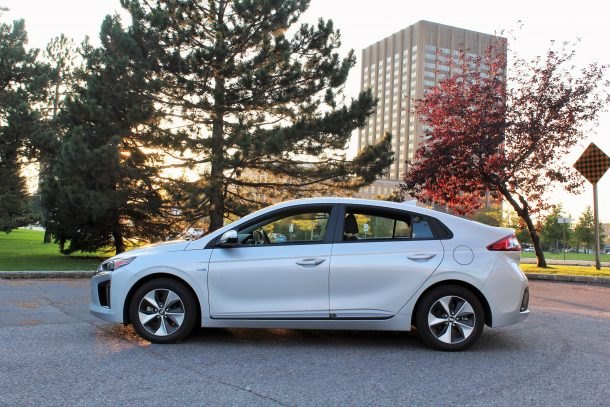


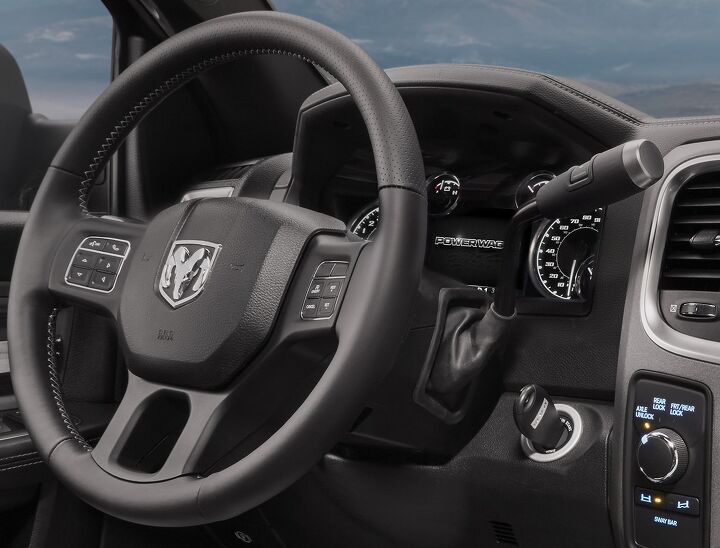
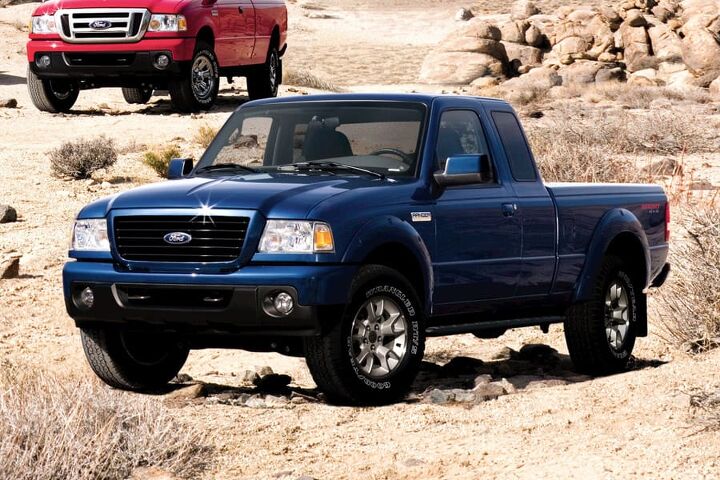



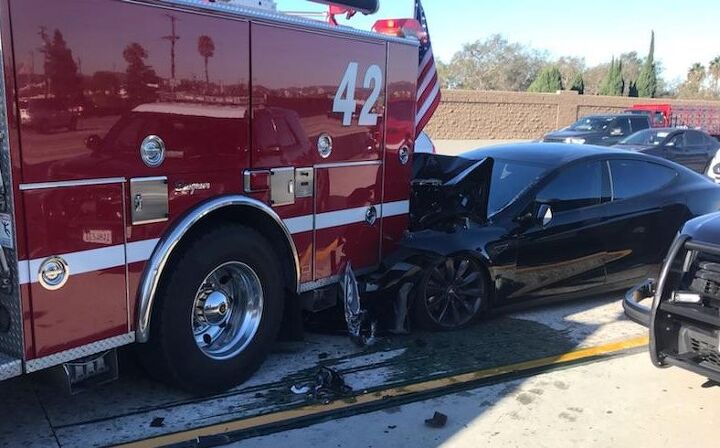

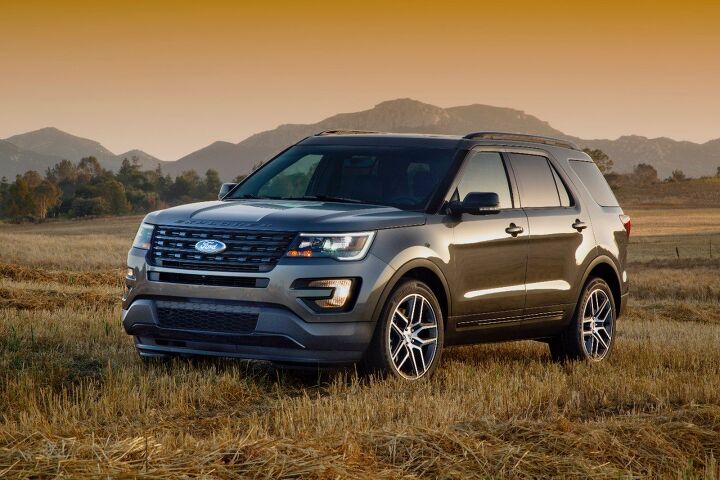















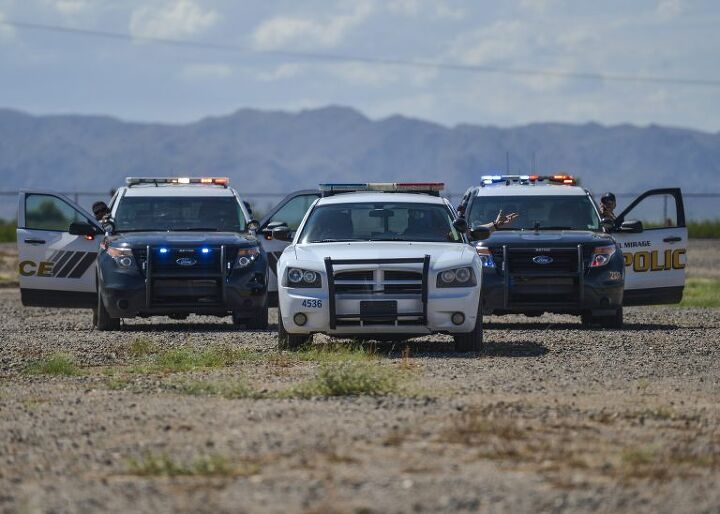






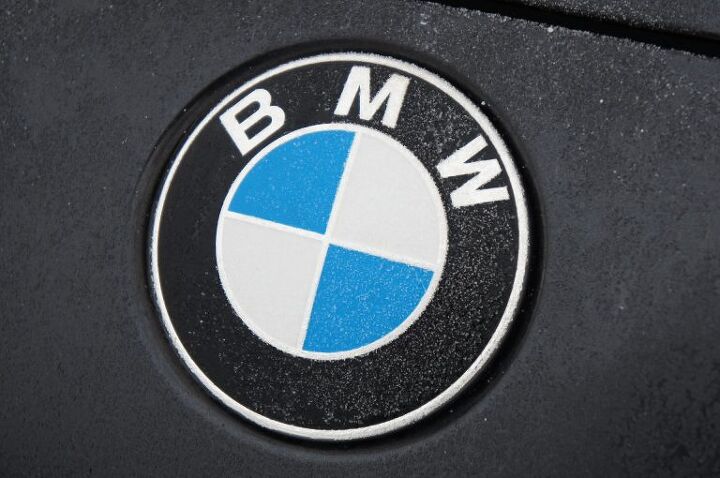

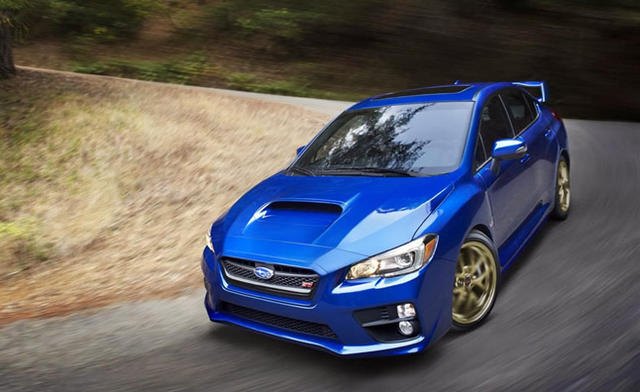






![Police Officers Suing Ford Over Alleged Carbon Monoxide Poisoning in Interceptor SUVs [UPDATED]](https://cdn-fastly.thetruthaboutcars.com/media/2022/07/19/9201747/police-officers-suing-ford-over-alleged-carbon-monoxide-poisoning-in-interceptor-suvs.jpg?size=720x845&nocrop=1)
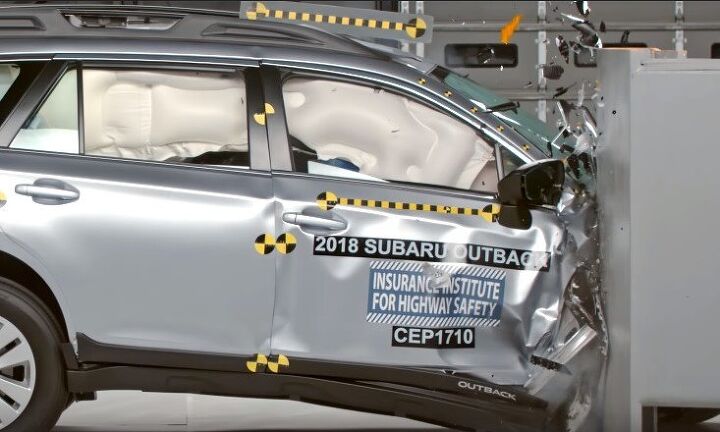














Recent Comments